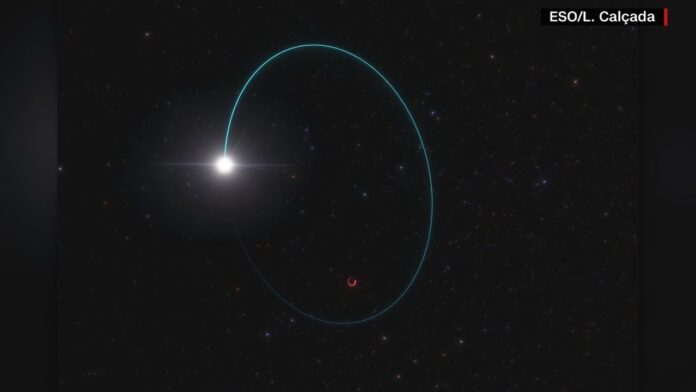A massive black hole, 33 times larger than the sun, discovered in the Milky Way
Astronomers have made a groundbreaking discovery, locating the most massive stellar black hole in the Milky Way galaxy.
Using data from the European Space Agency’s Gaia space observatory, astronomers identified this stellar giant by observing its unusual effect on the companion star that orbits around it, causing it to exhibit an irregular “wobbling” motion.
The black hole’s mass, confirmed with data from the Very Large Telescope (VLT) of the European Southern Observatory (ESO) and other ground-based telescopes, is an astonishing 33 times that of the Sun.
These massive black holes form when massive stars collapse, and previous discoveries in the Milky Way have typically been ten times the mass of the Sun. However, this newly discovered black hole, located in the constellation Aquila, surpasses even the next most massive star black hole known, Cygnus X-1, which is 21 solar masses.
Remarkably, this black hole is relatively close to Earth, situated just 2,000 light-years away, making it the second-closest known black hole to our planet. The Gaia observatory, which discovered it, has given it the nickname Gaia BH3.
“This is the kind of discovery you make once in your research life,” says Pasquale Panuzzo, an astronomer from the National Centre for Scientific Research (CNRS) at the Observatoire de Paris – PSL, France, and a member of the Gaia collaboration.
The proximity and massive size of this black hole present an exciting opportunity for further study and exploration of these cosmic phenomena.

